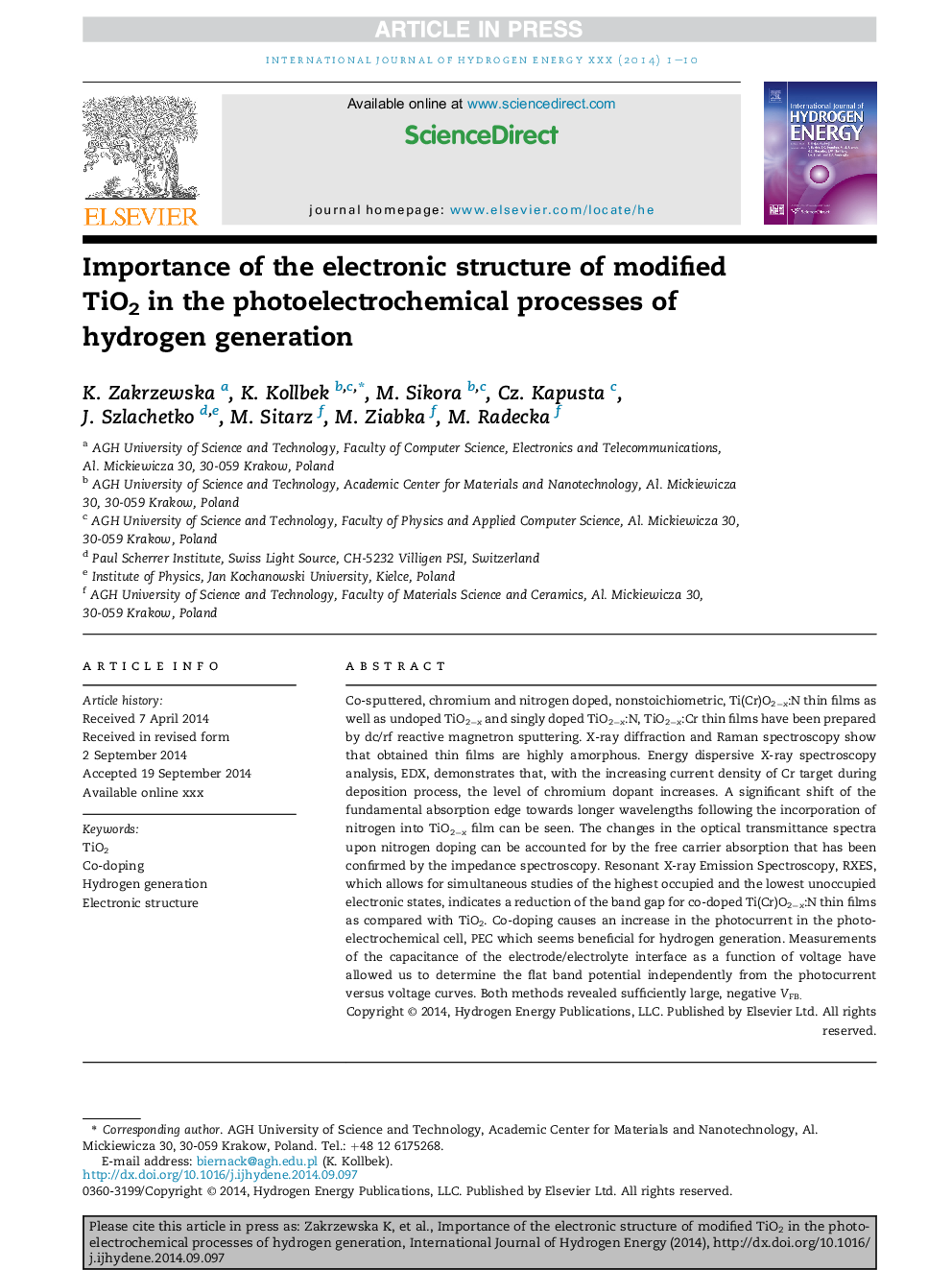| Article ID | Journal | Published Year | Pages | File Type |
|---|---|---|---|---|
| 7717517 | International Journal of Hydrogen Energy | 2015 | 10 Pages |
Abstract
Co-sputtered, chromium and nitrogen doped, nonstoichiometric, Ti(Cr)O2âx:N thin films as well as undoped TiO2âx and singly doped TiO2âx:N, TiO2âx:Cr thin films have been prepared by dc/rf reactive magnetron sputtering. X-ray diffraction and Raman spectroscopy show that obtained thin films are highly amorphous. Energy dispersive X-ray spectroscopy analysis, EDX, demonstrates that, with the increasing current density of Cr target during deposition process, the level of chromium dopant increases. A significant shift of the fundamental absorption edge towards longer wavelengths following the incorporation of nitrogen into TiO2âx film can be seen. The changes in the optical transmittance spectra upon nitrogen doping can be accounted for by the free carrier absorption that has been confirmed by the impedance spectroscopy. Resonant X-ray Emission Spectroscopy, RXES, which allows for simultaneous studies of the highest occupied and the lowest unoccupied electronic states, indicates a reduction of the band gap for co-doped Ti(Cr)O2âx:N thin films as compared with TiO2. Co-doping causes an increase in the photocurrent in the photoelectrochemical cell, PEC which seems beneficial for hydrogen generation. Measurements of the capacitance of the electrode/electrolyte interface as a function of voltage have allowed us to determine the flat band potential independently from the photocurrent versus voltage curves. Both methods revealed sufficiently large, negative VFB.
Related Topics
Physical Sciences and Engineering
Chemistry
Electrochemistry
Authors
K. Zakrzewska, K. Kollbek, M. Sikora, Cz. Kapusta, J. Szlachetko, M. Sitarz, M. Ziabka, M. Radecka,
